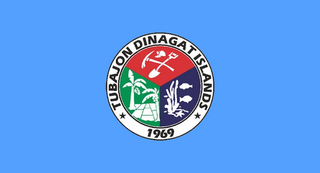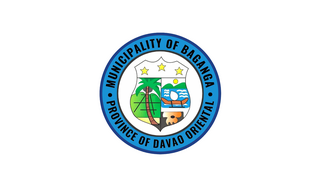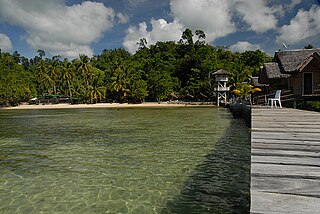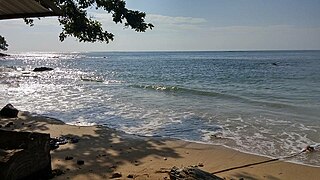
Surigao del Sur, officially the Province of Surigao del Sur, is a province in the Philippines located in the Caraga region in Mindanao. Its capital is Tandag City. Surigao del Sur is situated at the eastern coast of Mindanao and faces the Philippine Sea to the east.

Alegria, officially the Municipality of Alegria, is a 5th class municipality in the province of Surigao del Norte, Philippines. According to the 2020 census, it has a population of 16,184 people.

La Paz, officially the Municipality of La Paz, is a municipality in the province of Agusan del Sur in the Caraga of the Philippines. The population was 30,969 at the 2020 census. La Paz is the largest town in terms of land area in Agusan del Sur and the entire Mindanao.

San Francisco, officially the Municipality of San Francisco, is a 1st class municipality in the province of Agusan del Sur, Philippines. According to the 2020 census, it has a population of 80,760 people.

Basilisa, officially the Municipality of Basilisa, is a 4th class municipality in the province of Dinagat Islands, Philippines. According to the 2020 census, it has a population of 36,911 people.

General Luna, officially the Municipality of General Luna, is a 5th class municipality in the province of Surigao del Norte, Philippines. According to the 2020 census, it has a population of 22,853 people.

Gigaquit, officially the Municipality of Gigaquit, is a 4th class municipality in the province of Surigao del Norte, Philippines. According to the 2020 census, it has a population of 21,849 people.

Malimono, officially the Municipality of Malimono, is a 5th class municipality in the province of Surigao del Norte, Philippines. According to the 2020 census, it has a population of 18,852 people.

San Benito, officially the Municipality of San Benito, is a 6th class municipality in the province of Surigao del Norte, Philippines. According to the 2020 census, it has a population of 5,663 people.

Sta. Monica, officially the Municipality of Sta. Monica, is a 5th class municipality in the province of Surigao del Norte, Philippines. According to the 2020 census, it has a population of 9,423 people.

Socorro, officially the Municipality of Socorro, is a 4th class municipality in the province of Surigao del Norte, Philippines. According to the 2020 census, it has a population of 25,942 people.

Tubajon, officially the Municipality of Tubajon, is a 5th class municipality in the province of Dinagat Islands, Philippines. According to the 2020 census, it has a population of 8,119 people.

Baganga, officially the Municipality of Baganga, is a 1st class municipality in the province of Davao Oriental, Philippines. According to the 2020 census, it has a population of 58,714 people, making it the third largest town in province.

Bayabas, officially the Municipality of Bayabas, is a 5th class municipality in the province of Surigao del Sur, Philippines. According to the 2020 census, it has a population of 8,979 people.

Cagwait, officially the Municipality of Cagwait, is a 4th class municipality in the province of Surigao del Sur, Philippines. According to the 2020 census, it has a population of 21,747 people.

Carmen, officially the Municipality of Carmen, is a 5th class municipality in the province of Surigao del Sur, Philippines. According to the 2020 census, it has a population of 11,720 people.

Lianga, officially the Municipality of Lianga, is a 4th class municipality in the province of Surigao del Sur, Philippines. According to the 2020 census, it has a population of 33,869 people.

Lingig, officially the Municipality of Lingig, is a 2nd class municipality in the province of Surigao del Sur, Philippines. According to the 2020 census, it had a population of 35,142 people.

San Agustin, officially the Municipality of San Agustin, is a 4th class municipality in the province of Surigao del Sur, Philippines. According to the 2020 census, it has a population of 22,855 people.

Tagbina, officially the Municipality of Tagbina, is a 2nd class municipality in the province of Surigao del Sur, Philippines. According to the 2020 census, it has a population of 41,051 people.
























